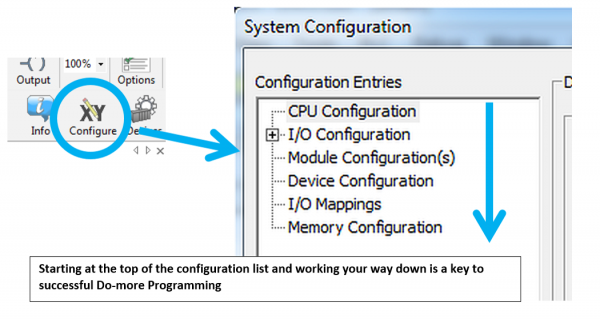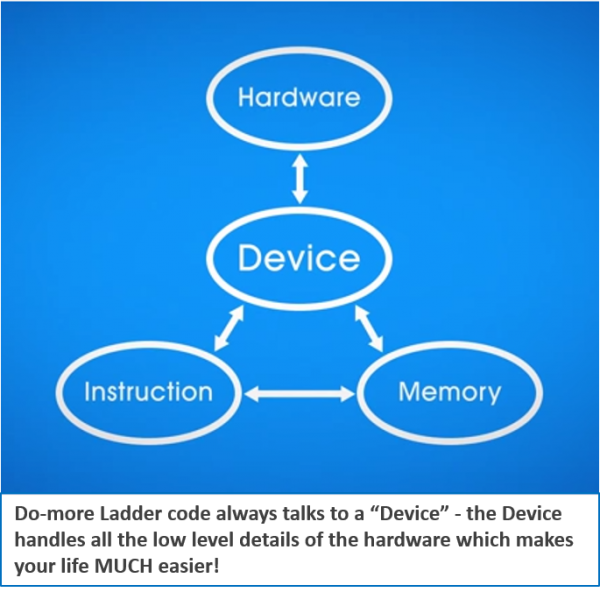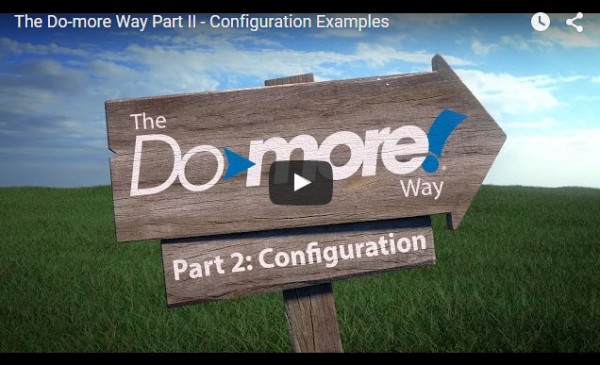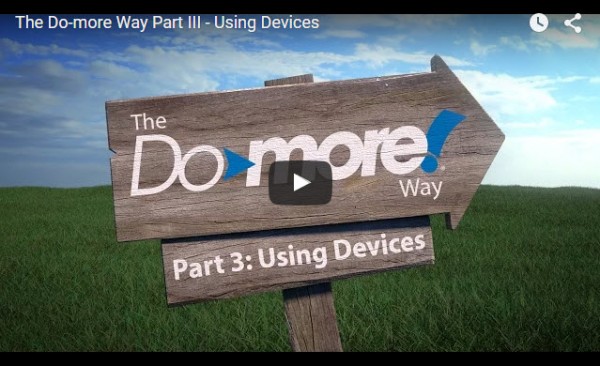The Do-more™ is a super powerful PLC with a modern programming engine that utilizes today’s best programming practices… and that sets it apart from your typical PLC. Of course, that also means that getting your mind wrapped around these programming methods is the key to creating a successful Do-more project quickly and efficiently. We call it learning the “Do-more Way” and it starts with an understanding of two simple concepts.
Configure from the Top Down
First, the Do-more configuration is best accomplished in a top down order. That is, you start at the top of the configuration list and work your way down. Why? Because everything in the list can depend on the item(s) above it. The CPU is the starting point – it doesn’t depend on anything but everything below it can depend on how you configure the CPU. For example, selecting the Ethernet I/O Master option in the CPU Configuration will add the required parameters to the I/O Configuration section.

Likewise, the I/O Configuration can affect the items below it, the Module Configuration can affect the items below it and so on. If you configure the Do-more from the top down, everything will fall into place and your job gets a whole lot easier.
Device Centric by Design
The second concept that is key to a successful Do-more project is understanding that the Do-more is “Device Centric.” That is, when programming a Do-more, you don’t actually talk to the hardware. Instead, you talk to a “Device” which is a lot like a driver on your Windows PC. Manufacturers provide drivers to their hardware that take care of all the low level details so programmers can send data to a printer for example, without having to worry about what kind of printer it is.

The Do-more works the same way. Your ladder code only talks to “Devices” – the Do-more’s version of a Windows driver. The beauty of that is you never have to worry about the low level details – the Do-more does all of that for you. Things like memory allocation, buffers, handshaking, status flags, etc., all of that is taken care of for you. Which means you can focus on getting your program up and running and not have to worry about the hassles of dealing with the hardware.
And since EVERY piece of hardware has a clean uniform interface to the ladder code, setting up and configuring hardware devices is a snap. It doesn’t matter how simple or complicated the hardware item is, all devices are set up the same way. You just pick which flavor of the device you want – do you want a general purpose serial port or a Modbus/RTU serial port for example – fill in a few blanks and then let the Do-more worry about all the memory allocation, handshaking, etc. This makes your life so easy.
So once you understand that it is best to configure the Do-more from the top down and that the Do-more is “Device Centric” you will be well on your way to enjoying all the benefits the Do-more has to offer.




